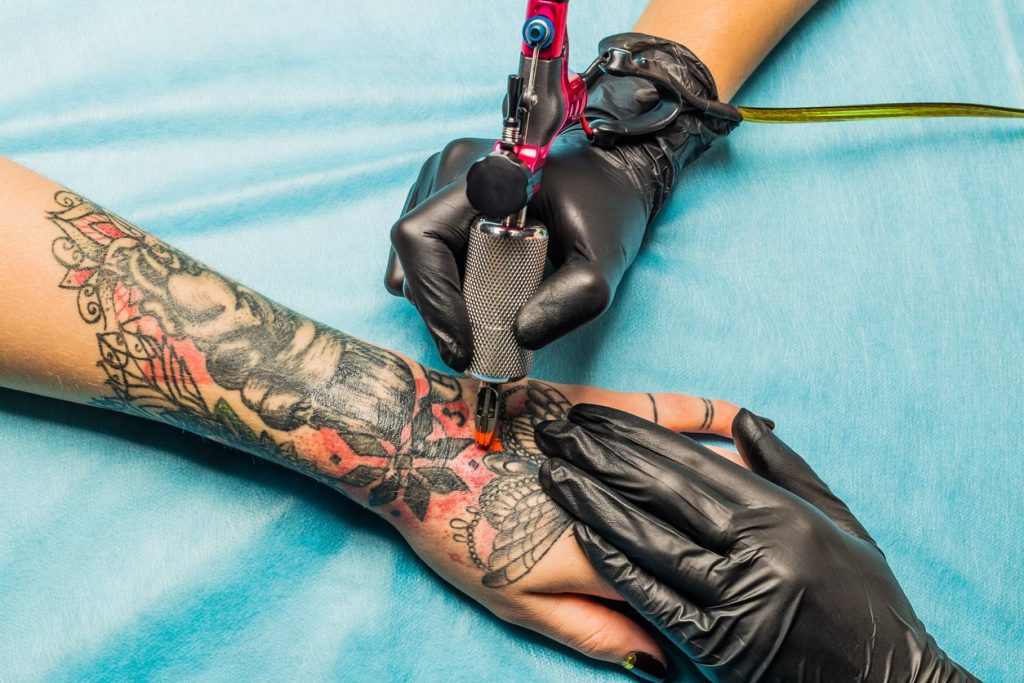
Nearly 4 in 10 millennials in Singapore have tattoos. Clearly, the popularity of tattoos has risen over the years, but so has tattoo removal at the same time. The reasons for removing a tattoo vary, and while advancements in technology have made tattoo removal easier over the years, the notorious reputation of red ink still stands.
Ask anyone with red tattoos and they would likely tell you the problems they’ve experienced specifically with their red ink — bumps, rashes, higher itch levels and slower healing speed. Of all the tattoos I’ve removed so far, red seems to be one of the hardest too. However, did you also know that red ink can trigger allergic reactions and other health problems?
I’m not here to discourage you from getting red tattoos. But as a healthcare professional, it is my responsibility to inform you of the risks associated with red ink and the precautions you should take.
Whether eaten in food, applied on or injected into our skin, red dye has been known to cause problems. As an artificial food colouring, red dye is either usually lab-created or made from the cochineal bug and known as carmine. Both are equally problematic, especially carmine — so much so that it has to be labelled as such on the packaging and not just as red dye.
Studies show that in children, red dye has been associated with worsening attention disorder and aggression. Beyond that, doctors have seen skin cancer tumours appear in only the red parts of tattoos. Needless to say, red tattoos are more susceptible towards the danger of ultraviolet light. In the tattoo world, a reaction to red ink is the most common, with many experiencing some redness and swelling. For some, however, red ink can spark allergy reactions, turning their tattoo experience into a nightmare. Some dermatologists also warn that if you have the gene for psoriasis, red ink might trigger the condition or cause a flare.
Heavy metals found in red ink are believed to be the reason why it’s so difficult on our bodies. Cinnabar, a mercury-based metal that used to be found in red ink, is not so much in use now with the advent of organic red tattoo pigments. But chemical analyses show that a mixture of other heavy metals like aluminium and lead can still be found in red ink. Solvent red 1, a substance in organic red pigments, is thought to cause fewer issues but has the potential to degrade into carcinogens, causing cancer.

Beyond the obvious suggestion of avoiding red colours in your tattoos, here are some precautions you can take to protect yourself.
Do a patch test
One way to find out if red ink sits well with your body is to do a patch test. Ask your tattoo artist to place a small amount of red ink on you (maybe a dot) and wait 24 hours. If the dot flares up over the next 24 hours, getting a full tattoo might be a bad idea.
If you don’t wish to take the risk, another way to tell if you’ll have a reaction to red ink is to see how your body reacts to cheap jewellery. This is because cheap jewellery contains nickel, an ingredient often found in red ink.
Apply bentonite clay masks
Bentonite clay has been found to help in detoxifying heavy metals. When used on tattoos —especially on older ones—, your tattoos become noticeably brighter. You can create your own clay mask at home by mixing clay with apple cider vinegar. Mix it till it becomes a paste and leave it on until it hardens. Note that this should NOT be applied to a new tattoo that’s still healing.
Apply hygiene standards
Wash your tattoo with antimicrobial soap and water and pat dry with a cloth. You may also want to apply antibiotic ointment and moisturise your tattoo regularly; hydrocortisone may help alleviate any discomfort or itchiness.
Limit your activities
Don’t go swimming or take long showers for the first 2 weeks. Wear protective clothing to keep your tattoo out of the sun as well, but don’t apply sunblock till after it heals which is about 3 weeks.
See a doctor
If the itch from your red tattoo persists or worsens despite home treatments, see a doctor immediately.
I hope this article gave you a better understanding of why red tattoos are harder to remove and carry more risks. In any case, if you wish to get any of your tattoos removed (regardless red or not), I’ve written a few articles on tattoo removal on my blog. You may wish to check them out. If you have a red tattoo that you'd like removed, contact us to explore safe and effective medical removal by a doctor.
Address:
1Aesthetics, Medical & Surgery
#14-90 The Central Tower 1
8 Eu Tong Sen Street
Singapore 059818
Mon-Fri 10 AM to 730 PM
Sat 10 AM to 6 PM
Phone / WhatsApp:
+65 66125173 / +65 84899962
Email:
[email protected]